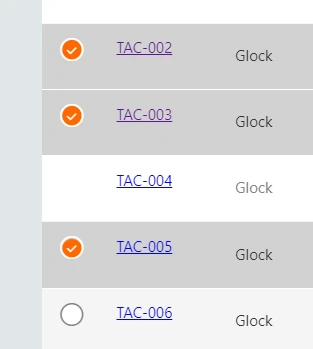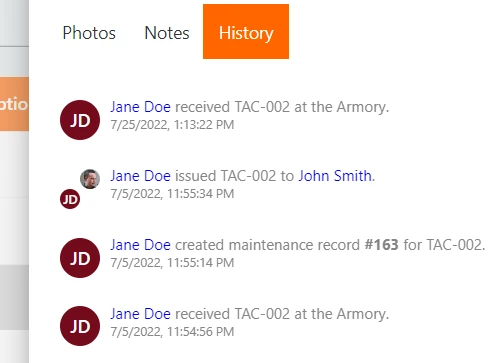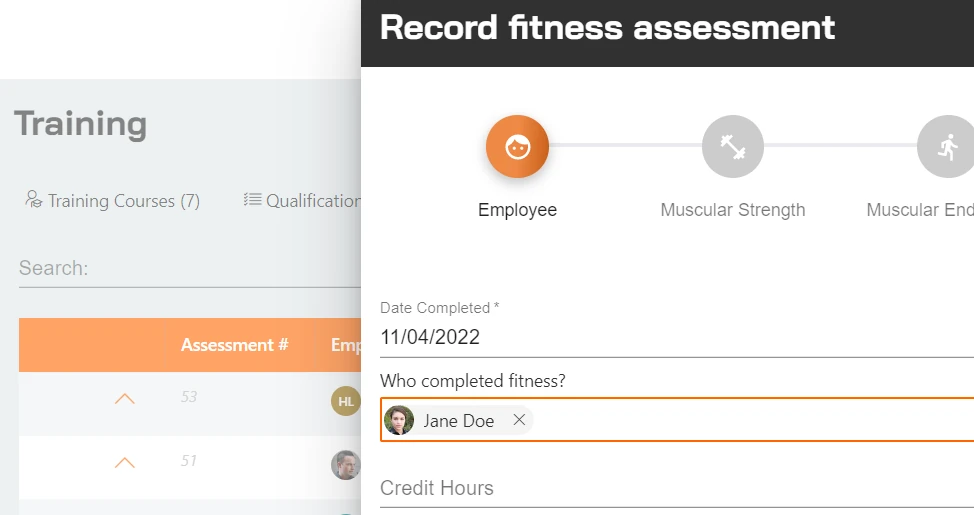Our features
Asset tracking
Armory System's flagship feature is our asset tracking functionality. We are compatible with
barcode/rfid scanner devices as long as they can do keyboard emulation. After you add your
assets, our action menu is smart enough to know which actions are possible and disables the
other actions.

The two main status pucks: Asset Status, and Current Location represent the current state of the asset and its physical location, respectively. When visiting the asset page, these pucks and their respective colors give you a quick high-level view of your asset data.
Inventory management
The difference between inventory management and asset tracking is that inventory management is
concerned with quantities of items instead of an inventory item with a specific serial #.Some of
our
inventory management features include using your barcode scanner for bulk quantity adjustments,
transferring to your offices or employees, and reorder point notifications that notify you when
stock is getting low.

Bulk actions
We designed every asset tracking and inventory management feature in Armory System with bulk
transactions in mind. 
History tracking
Tracking history is an integral part of any asset tracking system. Over the lifecycle of
essential assets like guns, law enforcement personnel should be able to see the chain of custody
for that particular asset. 
Training plugin
The training plugin we offer allows your organization to keep track of qualifications and
fitness exams. In law enforcement, in particular, there is a relationship between training and
inventory management because before officers are issued a weapon, they need to undergo specific
training and qualifications.

Custom data & theming
Armory System is customizable. You can put your organization's logo on the navigation bar. Bring
your organization's inventory location and asset category data to help your organization
maintain its current workflow. Hydrate your product data with the products your organization
uses.
